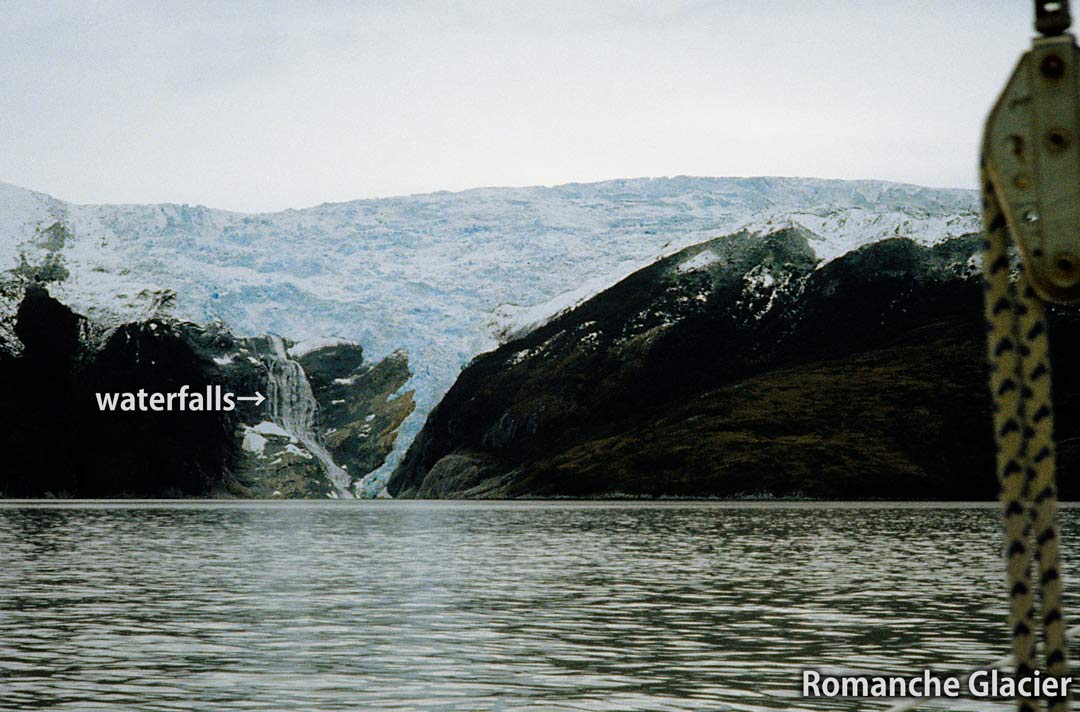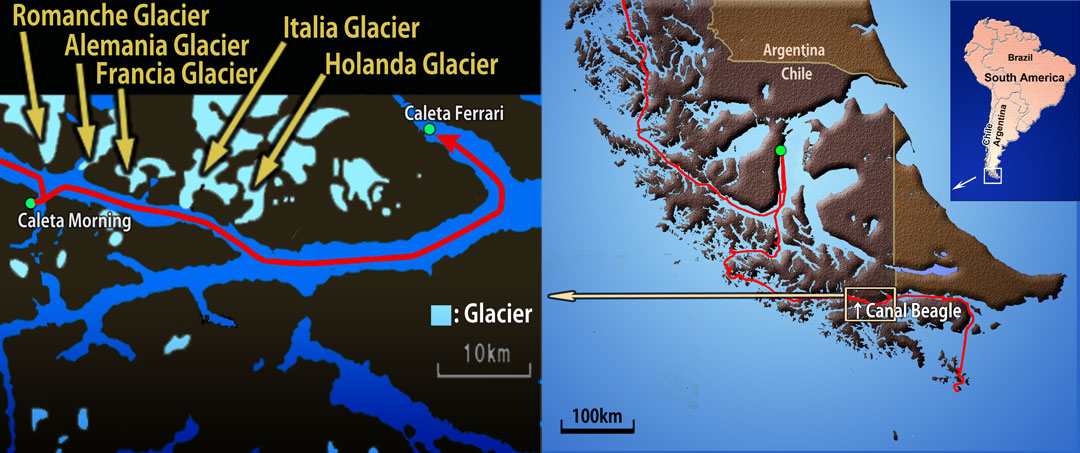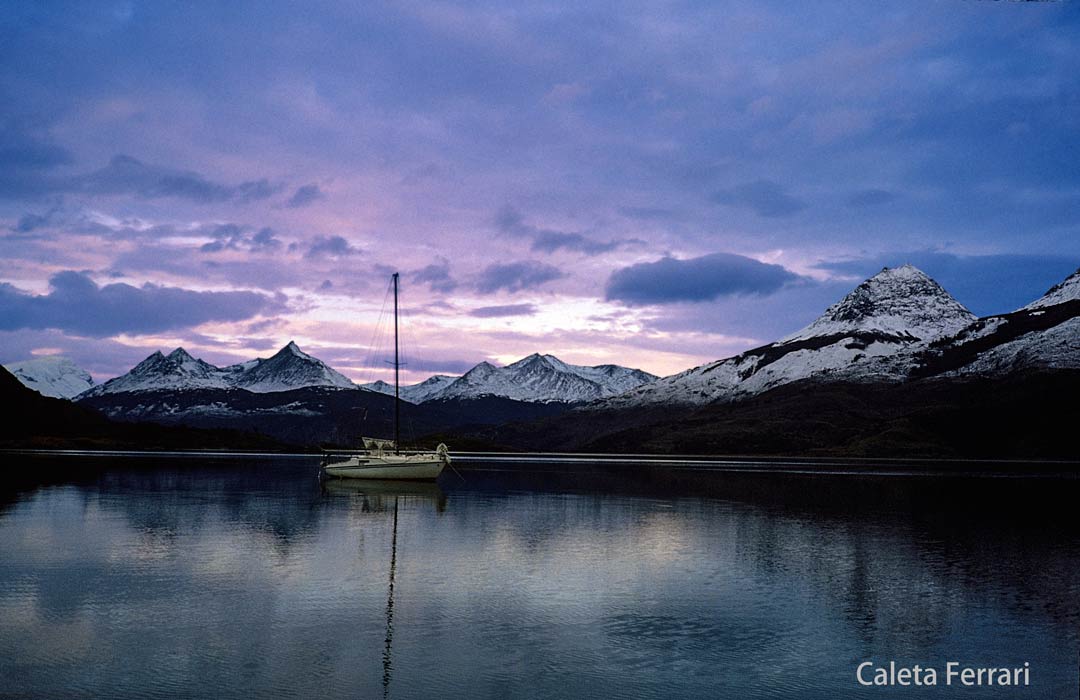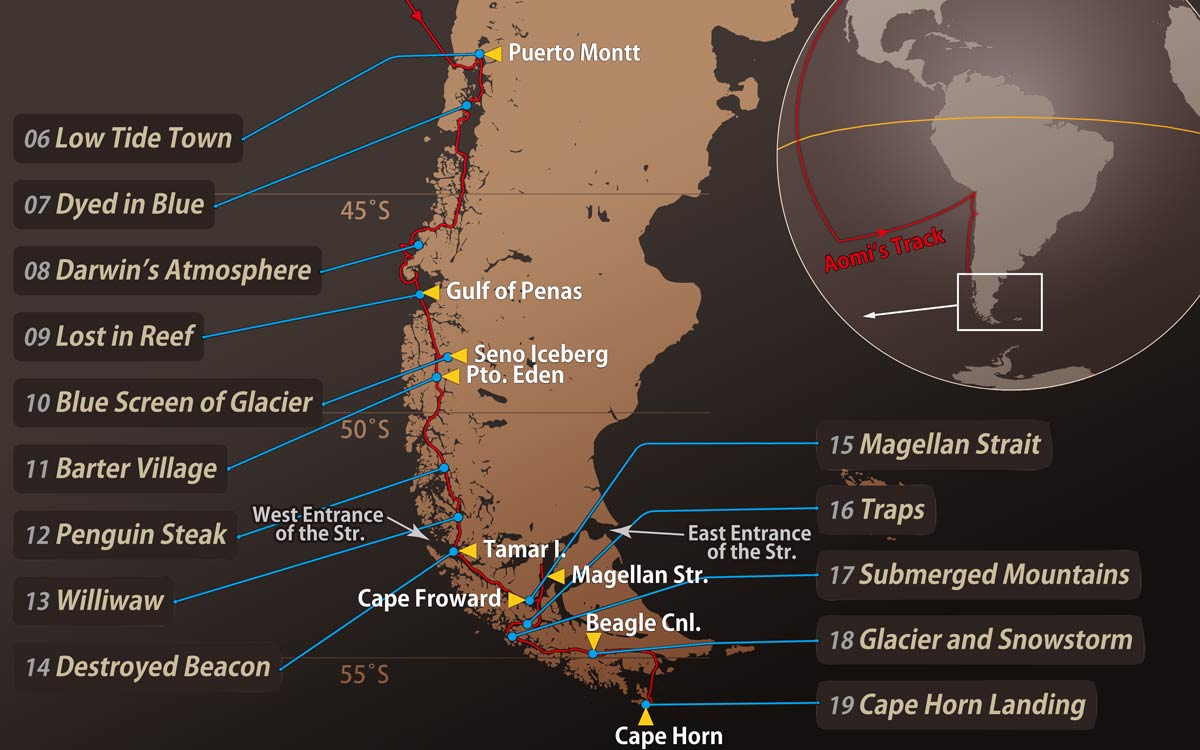18. Glacier and Snowstorm
When your goal is right in front of you, fear and worry may overwhelm you, making you doubt your ability to achieve it. You may feel your limitations and be crushed by the thought that all your efforts so far have been meaningless.
Cape Horn, which I had longed for, is now just ahead of Aomi and me.

The storm begins the day after I arrive at an inlet named Caleta Morning.
Wind mixed with snow rushes over the small inlet surrounded by mountains, whistling overhead and occasionally rattling the deck with hail. Waves from the Beagle Channel push into the inlet, causing Aomi to rock up and down. A blizzard must be raging in the channel.
According to the Pilot Chart, a meteorological map, the average wind speed at Cape Horn this month, April, is force 6. This average means there can be light winds of force 2, but it can also escalate to force 10, a fierce storm. Is it possible to sail around Cape Horn in such strong winds?
After about three days, the snowstorm subsides, and Aomi leaves the inlet and continues along the Beagle Channel. Darwin, famous for his theory of evolution, sailed through this channel on the HMS Beagle more than 150 years ago. How I dreamed of these days while studying the nautical chart before leaving Japan!
On both sides of the narrow waterway, mountains rise, and the blue of the glaciers is particularly vivid against the snow-covered slopes, white from the previous day’s storm. For over 20 kilometers, the Romanche Glacier, Alemania Glacier, Francia Glacier, Italia Glacier, and Holanda Glacier line up like a magnificent exhibition.
Although I have seen many glaciers since arriving in the Patagonian Archipelago of Chile, every time I look at this peculiar blue color and mineral crystal-like cross-section, it touches something deep inside me.
The glacier melts, and the water forms waterfalls cascading down the mountainside in many places. I look through my binoculars and hold my breath. How many hundreds of meters high is it? The falling water seems to move in slow motion. The mountains, glaciers, and waterfalls are too immense to comprehend. I am so overwhelmed by the grand scale that my head spins, and I cannot move for a moment.


In the evening, I arrive at Caleta Ferrari in Yendegaia Bay, 65 kilometers to the east. As usual, I drop the CQR anchor and check its holding power by pulling its rope with Aomi’s hull using the engine. But the anchor slips on the seafloor, so I quickly pull it up onto the deck.
I find gray mud on the anchor’s surface. The bottom should be mud, which is strange because the CQR anchor usually works well on a muddy bottom. Suspecting something is wrong, I try the Danforth anchor next, but it also slips. I pull it up and find mud on it as well.
No doubt, the anchors must have dug into the mud on the bottom, so there is no reason why they should not work. What’s happening? I have to hurry before it gets dark.
I observe the anchor carefully. I touch the mud on the surface and find it strangely soft. A small amount of hard mud is also on the anchor’s fluke.
This means the mud on the bottom may be too soft to hold the anchor, but there seems to be hard mud underneath. The anchor penetrates the layer of soft mud and reaches the hard mud, but that mud is too hard for the anchor to bite into.
Finally, it is time for a Fisherman anchor, known for its excellent holding performance. Now is the moment to use the Paul Luke 40‑pound model I purchased in San Francisco for the severe anchoring conditions of the Patagonian Archipelago.
I connect 50 meters of rope to the anchor and drop it into the water. As expected, the anchor does not slip at all, even when pulled using the engine. It has dug firmly into the seafloor. I am no longer afraid that Aomi will be blown away. I can sleep well tonight.
This incident reminds me how difficult anchoring can be. Is it possible to anchor off Cape Horn and leave Aomi behind while rowing a small dinghy in a stormy sea with average force 6 winds? If I do not anchor perfectly, she will be swept away unmanned.
—I am planning to land alone at Cape Horn, one of the most treacherous places.


Hi! Any questions or suggestions about the content are greatly appreciated.
I’d also love writing tips from native English speakers. Since English isn’t my first language, if you notice any awkward phrases or anything that seems off, please let me know.
Thank you!
E-mail